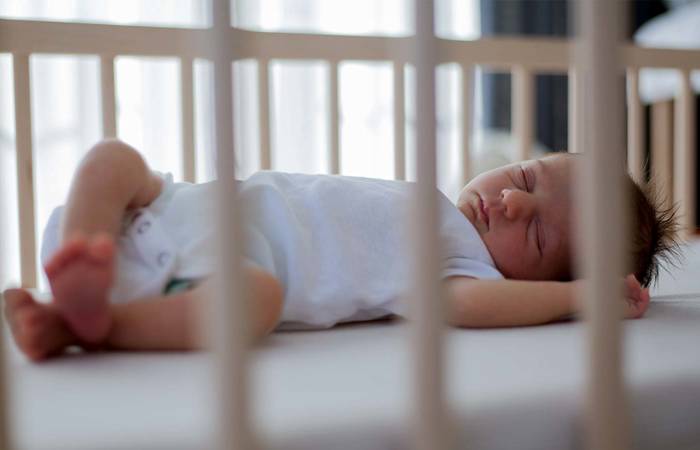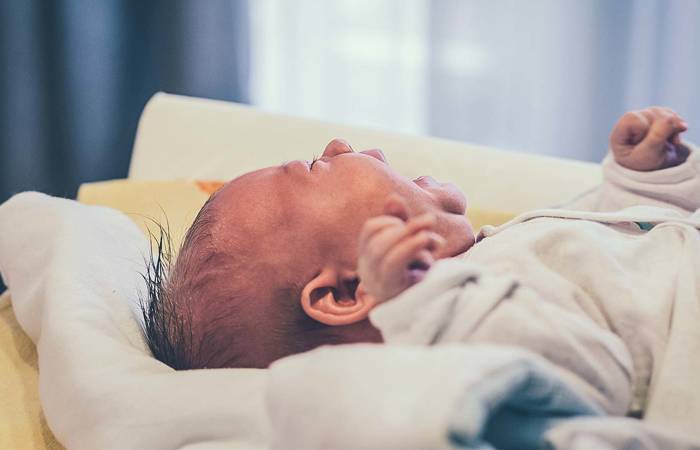Like what you see?
Sign up to receive more free parenting advice.
Thank you for subscribing to our newsletter!
Child Development

Credit: iStock.com/South_agency
The switch to and from daylight saving time is not something many parents get incredibly excited about. Most of us have to put up with disrupted sleeping patterns and, in some cases, cranky kids.
Also, there’s the frustration of trying to convince kids to go to bed when they repeatedly insist, ‘But it’s still daytime!’.
Dr Liora Kempler, a psychologist in insomnia, maternal and infant sleep from Sydney-based sleep specialists Integrated Sleep Health says it's much easier to delay our sleep than it is to advance it. Going to bed early does not necessarily mean going to sleep early.
“So, it's much easier to start preparing for the night, in the morning. Step one should be waking up early – and if you're really brave, waking your baby up early too – and getting lots of morning light. Even if the weather isn’t very inviting, outdoors in cloudy weather is far brighter than indoor light, so where possible, get some morning sun for at least 20 minutes as early as possible,” says Dr Kempler.
“This will suppress your melatonin (hormone required for sleep) and help shorten your circadian rhythm, bringing the onset of the melatonin marginally earlier than what it would on a normal night. Of course, step two is to do lots of busy activities so your children get nice and tired. That way, they may be more inclined to nap slightly earlier as well, if they're still napping.”
Transition in daily increments before the change
Dr Kempler says the next step to remember is that metabolism has a rhythm as well, so don't forget to shift your babies' meals earlier too.
“With night time, be sure to remember that babies don't know the time, they only know how they feel, so keeping their regular pre-bed routine is very important, and shifting bedtime slowly will make the transition as smooth as possible. This means shifting by approximately 15 minutes every 2-3 days until you're sleeping and eating in the right time zone.”
Dr Carmel Harrington, who is Managing Director of Sleep for Health and an Honorary Research Fellow at the Children's Hospital Westmead says if your children normally go to bed at 7pm and you’re trying to make them go to bed at 6pm, that’s not going to work because their level of alertness is going to make it very difficult.
“That’s why the first week of summer time is so difficult because it’s very hard to bring forward our body-clock rhythm (circadian rhythm),” Dr Harrington says.
“So make your child’s bedtime 10-15 minutes earlier but also make everything a bit earlier – for example, have breakfast earlier, in the same way we get used to jetlag. We can get used to that one hour over 4-5 days before the switch so we don’t even notice it when it occurs. “
Dr Harrington says one mistake parents tend to make during the daylight savings switch is expecting your child is going to go to sleep at 7pm because that’s the time they usually go to bed.
“If you put them to bed at 7pm as always, it’s only really 6pm to their body clock so they’re going to be wide awake. So there’ll be oppositional behaviour and that’s difficult, as well as being annoying to the parent and upsetting for the child.
“Also when the child wakes up the next morning, it’s essentially one hour earlier and if you don’t plan it, they’re actually getting one hour less and they’re going to be more cranky or poorly behaved. So we have to recognise it’s due to sleep deprivation or not getting the sleep they need.”
And what should parents do in the lead up to the end of daylight savings? Just do the reverse of what you did leading up to the beginning of the time change and slowly ease your child back into the new time.
So why is the change such a big problem for us? Dr Kempler says most of the issues that come with time shifting is the discrepancy in understanding.
“We, as parents, are tired, so for us to go to bed early is easy and a gift. However, we need to know what is reasonable to expect of our children, and asking them to go to bed an hour early out of nowhere – when they probably haven't eaten much dinner since they're not hungry yet – is not really fair,” says Dr Kempler.
“If we can set realistic expectations of ourselves and our families, there’s no real reason why there should be any problems aside from short term mild sleep deprivation from waking up early to get to work and commitments, when we may not have gone to sleep an hour earlier, but this should subside within a few days.”
“As far as a medical impact, this really only comes from frequent shifting of sleep patterns such as in the case of shift workers. However, one hour once per year is harmless.”
Top tips for daylight saving success
- Going to bed early does not necessarily mean going to sleep early.
- Start by waking up early (and waking your baby up early too) and getting lots of morning light.
- Get some morning sun for at least 20 minutes as early as possible. This will suppress your melatonin and help shorten your circadian rhythm, bringing the onset of the melatonin marginally earlier than what it would on a normal night.
- Organise lots of busy activities so your children get nice and tired so they’ll be more inclined to nap earlier as well.
- Metabolism has a rhythm as well - don’t forget to shift your babies' meals earlier too.
- Mums and Dads need to follow the same advice they give to the children. The whole household can go to bed earlier - 10 minutes one night, 15 minutes the next, and keep going and bringing the clock forward ‘piecemeal wise’ rather than all in one night.
- If the shift is becoming difficult, parents could try and have a 20 minute nap in the afternoon. A ‘power nap’ can help you get over the hump of tiredness without preventing the ability to sleep that night.
Stay up to date with the latest news and articles from First Five Years
Thank you for subscribing to our newsletter!







